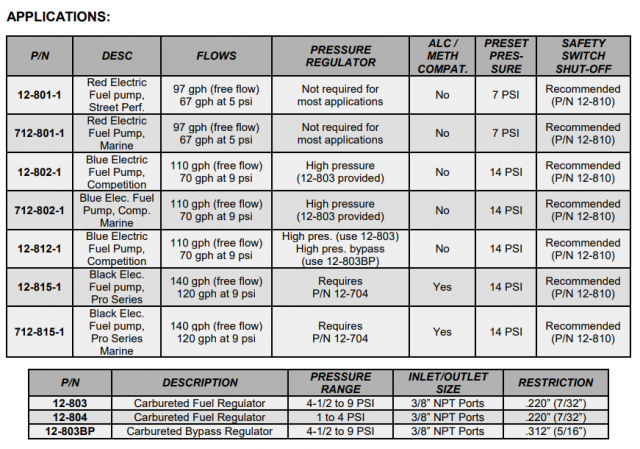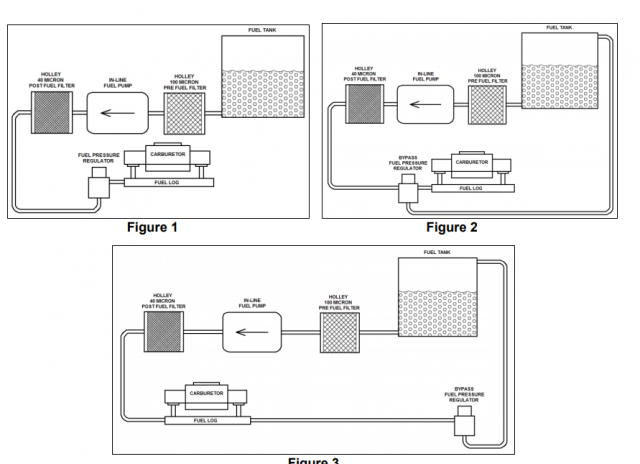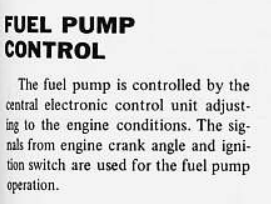
NewZed
Members-
Posts
6698 -
Joined
-
Last visited
-
Days Won
72
Content Type
Profiles
Forums
Blogs
Events
Gallery
Downloads
Store
Everything posted by NewZed
-
No offense to SeattleJester. Just saying, this problem persists even though it's known. Not sure why. There should be a post like this at the top of the FAQ area, and in each sub-forum there. But, even better than this post, there should actually be some information about posting in the FAQ area. The title here says "posting FAQ" but there's not another word about posting in the FAQ area. People are still posting in the FAQ area and waiting for replies but it is not possible to reply to an FAQ post. This should not be hard. Just pin a post to the top of each FAQ sub-forum that says "people cannot reply to your post if you ask a question here". Someone could even just put those words at the top of each page so that people don't have to open the post. WARNING - people cannot reply to your questions here!
-
Using 5/8 bolt in place of spindle pin
NewZed replied to fusion's topic in Brakes, Wheels, Suspension and Chassis
https://www.precisionbolts.net/ -
82 280zx Na power to injectors but not shooting out fuel
NewZed replied to Casanova702's topic in Nissan L6 Forum
How do you now that you're getting spark? It sounds more like your "matchbox", ignition module, on the distributor is bad, or the triggering mechanism inside the distributor. Starting fluid will tell you if the spark is good. The injectors won't open (shoot fuel out) if there's no spark. The ECU opens the injectors after each three sparks it sees. The simplest cheapest test you could do is to shoot some starting fluid in the intake manifold and see if it runs for a few seconds. If it won't you probably have a bad ignition module. -
82 280zx Na power to injectors but not shooting out fuel
NewZed replied to Casanova702's topic in Nissan L6 Forum
How do you know the injectors are not opening? Have you tried starting fluid in the intake manifold to be sure that you have good air flow and cylinder pressure? If you have spark and everything else is right the engine should start and run for a second or two with starting fluid. You're not giving enough information to make good guesses. -
1977 280Z dash vents not blowing
NewZed replied to Chickenwing's topic in S30 Series - 240z, 260z, 280z
Adding on to Sjoost's comment - the vacuum lines in the engine bay can split or break. I had a problem with the small one that supplied the vacuum to the bottle from a port on the intake manifold. It would split at the manifold, I'd lose vacuum and all I got was cold air from the heater. Just filling out the potential causes. -
Helical Limited Slip Function and Torque Bias Ratio
NewZed replied to JMortensen's topic in Drivetrain
I think the heart of the question is around their claims. Does the WaveTrac drive the wheel on the ground if the other one is lifted, in a corner? They imply one thing but then water it down the more they talk about it. ABOUT WAVETRAC Wavetrac®: Designed from a clean sheet using state-of-the-art knowledge and engineering to be a better differential than any other. It uses a patented design to improve grip in low traction conditions. Wavetrac®: Gives you quicker acceleration and faster cornering by driving both drive wheels instead of just one. And, it offers improved no-load performance when compared to other helical gear differentials on the market. Precisely engineered wave profiles are placed on one side gear and its mating preload hub. As the two side gears rotate relative to each other, each wave surface climbs the other, causing them to move apart. Very quickly, this creates enough internal load within the Wavetrac® to STOP the zero axle-load condition. The zero axle-load condition is halted, and the drive torque is applied to the wheel on the ground (the gripping wheel)… keeping the power down. Some gear differentials rely solely on preload springs to combat loss of drive. The drawback is that you can’t add enough preload to prevent loss of drive without creating tremendous handling and wear problems at the same time. So, to avoid these problems, the preload from ordinary spring packs must be reduced to a level that renders them ineffective at preventing loss of drive. The Wavetrac® is the only differential that can automatically add more load internally when it’s required. -
Helical Limited Slip Function and Torque Bias Ratio
NewZed replied to JMortensen's topic in Drivetrain
Ford's Traction-Lok design uses the side gears as the ramps, and preload springs to keep them engaged. They say that the wheel with traction is always driven even with one off the ground. From a 2000 Workshop Manual. -
Helical Limited Slip Function and Torque Bias Ratio
NewZed replied to JMortensen's topic in Drivetrain
http://www.wavetrac.eu/index.php?route=information/information&information_id=7 -
I'm just trying to help. Sorry if I'm asking too much. Not sure what you mean by ball bearing. Almost all carb float valves are a brass needle and a rubber seat. Looks like your pump and regulator should work well together, so you probably just have to get your valve and floats working right. Good luck. https://www.holley.com/products/fuel_systems/fuel_pumps_regulators_and_filters/fuel_pumps/carbureted_fuel_pumps/carbureted_electric_fuel_pumps/parts/12-426 https://www.pegasusautoracing.com/productselection.asp?Product=1498
-
-
Do all of the carbs flood or just one or two? What pump? What regulator? There's a bunch of both. https://documents.holley.com/199r7914-3rev6.pdf
-
Using 5/8 bolt in place of spindle pin
NewZed replied to fusion's topic in Brakes, Wheels, Suspension and Chassis
This should be explained in the instructions with the kit, because it should have been addressed when the system was designed. -
So everything worked fine before with the mechanical fuel pump? Triple Webers, no return line, mechanical fuel pump, old parts in the carbs. You switched to an electric pump, and rebuilt the carbs while you were working on things? It's not going to be the wiring that is the problem. Either the pressure is too high or your new float bowl valve seats aren't sealing. Looks like you changed several things at the same time so it's hard to tell which is causing your problem. You might get a gauge and measure pressure. Don't rely on the written specifications. Also, make sure that the Holley regulator is designed to be deadheaded. It sounds like your regulator might be plumbed incorrectly. Show the plumbing diagram. Might also be that the Holley regulator spec means that it can handle 1-4 psi, not more. What pump are you using?
-
The engine sounded good but it did sound like the timing might be retarded a bit. Invest in a decent timing light, they're easy to use and not too expensive. Since the engine ran well with no major knocking noises and the oil did not look bad I'd say don't do anything drastic until you know more. Don't let anyone, or a youtube video, convince you that you need to replace head gaskets or manifold gaskets or whatever. Engines can have many small problems and still run well without doing more damage. Your main concern should be that you have good oil pressure, I'd assume that there is a working gauge, and the oil stays clean. Low oil pressure is the main killer of all engines. Most will survive the other stuff, but just run poorly in the meantime. Your title says "rebuild" but there are no signs that you need to rebuild anything. Besides oil pressure though, your other big concern is that that engine in a Z is just itching to get sideways and leave the road. Be careful.
-
Smoke coming from the engine bay, assuming that the car has a full exhaust system on it, is usually from oil on the headers, from a leak or from recent work. Headers get hot very fast and the oil will vaporize almost as soon as the engine starts. In your second video whatever you were scraping at is barely visible, and the oil on the rocker arm and top of the head doesn't look bad. It might be that you're just not familiar with what you're seeing. If the engine has been sitting a long time there might a small amount of condensation that will burn off as the engine runs. If you're really worried about coolant in the crankcase just drain the oil and see what comes out. If there's a lot of water it will separate from the oil. You'll get a layer of water then the oil. Or the oil will look milky because the water has been whipped in to it by the crankshaft. If you think that you might have coolant leaking in to a cylinder, just pull the spark plugs and examine them. Coolant is a great cleaning agent in a hot combustion chamber. You'll either have fouled plugs because of loss of compression and/or water, or clean plugs next to normal, or they'll look okay. But there will be signs if you have a problem. Coolant on top of the manifold probably has nothing to do with coolant inside the engine, unless the manifold i not seated properly. But if that were the case you'd probably have intake vacuum leaks also, causing problems with the engine running. Separate those two things in your mind. Good luck, the engine sounds pretty good, at least as far as phone cameras go. You might create a youtube page and load your videos there. Easier to share and they'll play faster.
-
Go for it. Take some pictures, it will be good entertainment. Are we talking Sawzall, hacksaw, file, grinder? Make a video. https://row52.com/Vehicle/Index/1N6SD11S6PC357322 https://row52.com/Vehicle/Index/1N6SD16S4RC354902 https://row52.com/Vehicle/Index/1N6SD16S0MC421925
-
That's a lot of machine work and parts sourcing just to get a couple of bolt holes to line up. And why do all of that work, then use "right stuff" to goop up any holes? If the Z22 distributor body is what you really need, with a splined drive end on the shaft the simple thing to do might be to swap the L28 shaft in to the Z22 unit, or modify the Z22 shaft. Cut it and lengthen it. But the splined end looks detachable anyway, so really it's just lengthening the shaft and reattaching the splined drive piece. Make an adapter to mount the body to the L28 cover. Don't forget that you'll need a trigger wheel on the top and a 6 plug cap if you decide to use it as a distributor also. In the end this is the same as the Jeep CAS or the Pathfinder CAS modification though. The overarching question is which is more rational and cost-effective - sourcing, buying, modifying, and installing a whole front cover (don't forget the crank snout seal and the water pump and its ports and the seal to the oil pan), or sourcing, buying, modifying, and installing a more readily available distributor. https://www.rockauto.com/en/catalog/nissan,1994,d21+pickup,2.4l+l4,1212084,ignition,distributor,7108
-
@cgsheen, I think, has written about other ways to get an alternative optical disc in the distributor. I think maybe a Pathfinder CAS/distributor was used. There are also threads out there about the Jeep CAS/distributor. A lot depends on what engine management you're planning to use. Nissan or MS or other.
-
280z 1976 stalls after startup. Throttle body switch?
NewZed replied to Sjoost's topic in S30 Series - 240z, 260z, 280z
1976 should not have points, it should have a magnetic pickup system. The GM HEI module is designed for that type of system that's why it works well in the Nissan application. The 0.6 ohm Flame Thrower should work well with the HEI module. Yours might have one or two pickups but you can only use one if you convert to the HEI module. The second pickup is for emissions purposes, it's not a big deal to swatch to one. -
It depends to a certain extent on how you have the injectors attached to the rail. The Pallnet rail has the injector o-rings inserted in to a cavity to seal the top and uses the precisely machined mounts to press the bottom o-ring against the manifold surface. The bottom is not the typical o-ring seal, it uses downward force to create the seal. If you don't get the rail mount correct, and the sealing surface flat and clean, you can have a vacuum leak at the interface with the injector. Coincidentally, a typical o-ring style injector will project in to the flow stream of the L6 manifold at just about the perfect level for injection. Not too deep or too shallow. You don't have to use o-rings either, you can use the Nissan sealing rubber instead. A more typical aftermarket mount would fasten bungs to the manifold to create a technically correct o-ring seal. But the downward force method works on the bottom because it is only sealing intake vacuum, not fuel pressure. It's not ideal but it seems to work fine for a lot of people. You can find injector bungs everywhere if you want to be more correct. https://www.jegs.com/p/JEGS/JEGS-Fuel-Injector-Bungs/3318814/10002/-1#
-
Removing door with engine installed..Ok to do?
NewZed replied to brianZortiz's topic in Body Kits & Paint
If it was a problem the sag would happen with the doors open. If the point where the door mounts is deforming due to weight then the door hinges would bind. Can't imagine a problem with removing them. -
I misunderstood the FSM, it seems that it probably adjusts to engine conditions, as they say. You said that you just wanted to get the engine running before removing it. Jumping the pump is the way to do that. Good luck, whatever you end up doing. Parts for the old ECCS system are hard to find so Megasquirt or other standalone is probably more dependable in the long run.
-
Is this a thing? "the clicking fuel pump relay syndrome" classiczcars.com has FSM's that you can download. 1981 is still primitive. I think the fuel pump just runs full speed all the time. Might as well jump it if you just want fuel pressure. Here's the section from the 1981 Turbo Supplement. You should get a 5 second prime, or you can pull the starter solenoid wire and use the Start circuit.







